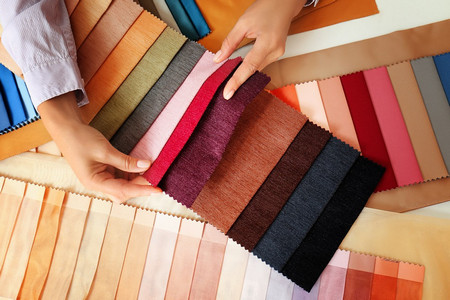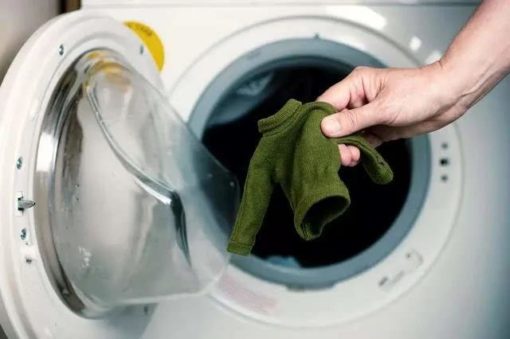Research on the influencing factors and improvement of textile fabric shrinkage
What is shrinkage of textile fabrics?
Textile fabric shrinkage is a phenomenon in which the length or width of a textile changes in a certain state after washing, dewatering, drying and other processes. The measure of shrinkage is called the shrinkage rate. The type of fibre, the structure of the textile fabric, the external forces during the weaving process, etc. all affect the shrinkage performance of the textile fabric.

According to the basic knowledge of textile fabric shrinkage can be seen, the textile fabric shrinkage of the influence of factors mainly with the textile fabric raw material type, tissue structure, processing conditions and other factors related to.
1. The influence of fibre composition:
Different fibres and their textile fabrics, the degree of shrinkage are different, mainly depending on the hydrophilic properties of their fibres, i.e. moisture absorption properties. Moisture-absorbing fibres textile fabrics, fibres in the immersion of water will produce expansion, diameter increase, length shortening, shrinkage situation is obvious. For example, viscose fibres have a large water absorption rate, and textile fabrics with a large moisture absorption like these will produce severe shrinkage after washing. Synthetic textile fabrics, such as polyester and polypropylene, are less hygroscopic and therefore have a smaller rate of change in size when washed.
In addition, wool and other fibres with scale structure textile fabric felt shrinkage, in the water under the mechanical action, wool scale one-way irreversible phase jamming make wool textile fabric occurred continuous felt shrinkage, improve the method of addition (closed scale layer) and subtraction (remove scale layer by chemical method) two kinds.

2. Influence of the textile fabric structure:
The textile fabric itself has a different structure and weaving tension, the weaving shrinkage rate is different, the shrinkage rate is different. Weaving tension is small, the textile fabric is tight and thick, weaving shrinkage rate is large, the textile fabric shrinkage rate is small; weaving tension is large, the textile fabric is loose and thin, weaving shrinkage rate is small, the textile fabric shrinkage rate is large.
Textile fabric density is different, the shrinkage rate is also different. Such as warp and weft density is similar, its warp and weft shrinkage rate is also close. The warp density of the fabric, the warp shrinkage is large, and conversely, the weft density is greater than the weft density of the fabric, the weft shrinkage is also large.
In general, the dimensional stability of machine textile fabrics is better than that of needle textile fabrics; the dimensional stability of high-density textile fabrics is better than that of low-density ones. In the machine textile fabric, the shrinkage rate of the general plain textile fabric is smaller than that of the flannel textile fabric; and in the needle textile fabric, the shrinkage rate of the plain needle organization is smaller than that of the ribbed textile fabric.
3. The influence of the production process:
Generally speaking, textile fabrics are stretched by machines during the weaving and dyeing process and processed for a long time, so that tension exists in the textile fabric. However, textile fabrics are easily released from tension when exposed to water, so that we find textile fabrics shrinking after washing.
In addition, textile fibres are subjected to heat conditions, the form and size of the fibres change and shrink, and cannot return to their initial state after cooling down, known as thermal shrinkage of fibres. For example, the boiling water shrinkage rate of processing polyester staple fiber is 1%, vinylon boiling water shrinkage rate of 5%, chlorine spandex hot air shrinkage rate of 50%. Heat shrinkage, mainly in polyester nylon such as thermoplastic chemical fibres above, is improved by good heat setting when dyeing and finishing, through high temperature setting to make it obtain good dimensional stability.
By the textile fabric shrinkage factors can be seen, textile fabric shrinkage is inevitable, so the need for textile fabric shrinkage necessary research, the following is some common textile fabric shrinkage treatment research.
1 cotton and linen class without elastic shuttle textile fabrics, its weft shrinkage control process in the control of mercerization door width, rather than heat setting. Cotton and linen fibres do not have the same thermoplastic as polyester and nylon fibres (or in other words, the glass transition temperature of cotton and linen fibres is too high, the current sizing machine can not reach, even if it can reach the first coking rather than softening, so it is meaningless), so heat sizing does not make it like chemical textile fabrics to obtain the same dimensional stability, only through the internal stress relief of mercerization, in order to obtain good dimensional stability.
2 In practice, for some cellulose fibre non-elastic textile fabric first weft pull to the extreme, and then again over water retraction door width, may also partially improve its weft shrinkage, guess the reason for two.
One is that in the case of weft-drawn to extremes, there is partial untwisting of the weft yarns, leading to an improvement in weft shrinkage. At this level, this method is only effective for light textile fabrics, as the tension provided by the sizing machine is not sufficient to untwist the weftward yarns of heavy textile fabrics; it would be more effective for coarse stiff yarn counts with low twist, which are more prone to untwist.
Another reason may be due to the inherent stiffness of the fibres, similar to ironing a pleat in a garment at high temperatures, which will not be easily removed. In the case of high temperature weft pulling, the more rigid the yarn is when ironed in its current bent state, the more likely it is to achieve a "mechanical setting" effect (as opposed to the glassy temperature setting of chemical fibres), from this point of view, hemp is greater than cotton and cotton is greater than rayon, because in terms of fibre rigidity, hemp is greater than cotton and cotton is greater than rayon.
This type of improvement is only a partial improvement, and the shrinkage improvement figure is also usually only 1-3%, and there is an adaptation to the textile fabric, which is a last resort to save the day. The normal practice should be to improve the mercerisation process.
3 The warp shrinkage of cotton-polyester or cotton-blend textile fabrics is usually not as great as that of cotton textile fabrics, it is only the shrinkage caused by the "drying and setting" deformation, but not the shrinkage caused by the swelling of the weft fibres leading to their increased winding. People in cotton long car factories are usually surprised that cross-textile fabric dyeing plants never do pre-shrinking machine pre-shrinking, is not as strong as the need for cotton textile fabrics.
4 Spandex-containing stretch fabric, must be heat-set to make it obtain a good shrinkage, here there are two methods: one is a higher temperature x shorter setting time, the second is a lower temperature x longer setting time, they are equivalent in the textile fabric to obtain a good shrinkage, but the economy of the former is better, textile fabric rebound effect of the latter is better.
5 Shrinkage and shrinkage are two different concepts, shrinkage refers to the rate of change in size of the textile fabric after washing, while shrinkage refers to the warp elongation or shortening of the textile fabric due to changes in weft density during the dyeing and finishing process. Shrinkage = (weft density of the blank - weft density of the finished product) / weft density of the blank. A large dyeing and finishing shrinkage of textile fabrics does not mean a large shrinkage of textile fabrics. The dyeing and finishing shrinkage of a textile fabric is the "material consumption" of the textile fabric in order to obtain a specific style under a specific dyeing and finishing process, while the shrinkage is a physical property of the textile fabric itself. For example, with warp-knitted fabrics, we can have a variety of shrinkage rates through different heat-setting processes, but the shrinkage rate can be kept at around 5%.
2023-02-07 11:19
- Related News
The importance of battery internal resistance testing in the battery manufacturi
Application and structural principle of high and low temperature test chamber
Application of Small Coating Machine in Polyimide Slurry
Principles and selection methods of laboratory incubators
Evaluation of Moisture Absorption and Rapid Drying Performance of Textiles by Na
Liquid Moisture Management Tester
Paper ring compression strength tester standards
